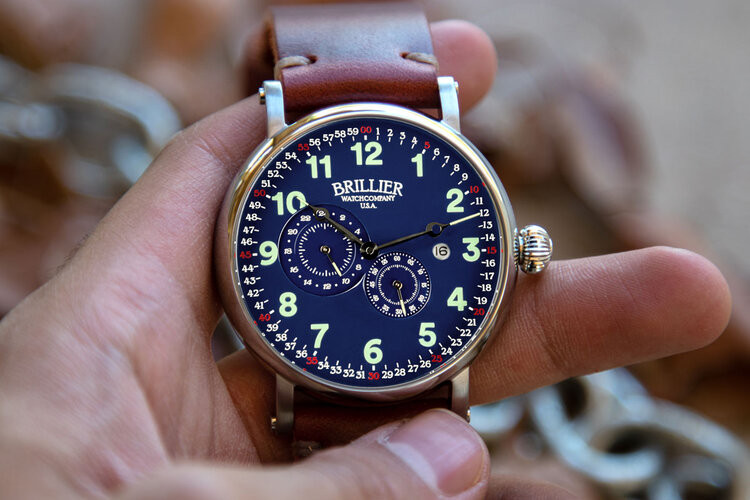
How Does a Mechanical Watch Actually Work? Breaking Down the Movement
In an age dominated by smartwatches and digital displays, there’s something uniquely captivating about a mechanical watch. No batteries, no circuits – just a symphony of tiny gears, springs, and levers working in perfect harmony to tell time. It’s a miniature engine on your wrist, a testament to human ingenuity and precision engineering.
But how does it actually work? For many, the intricate dance visible through an exhibition case back remains a beautiful mystery. Let’s pull back the curtain and break down the fundamental components that power these horological marvels.
The Heartbeat: A Journey Through the Movement
Every mechanical watch, whether it’s an automatic winding itself with your motion or a manual wind requiring daily attention, operates on the same core principles. Think of it as a four-stage process:
-
Power Generation: Where does the energy come from?
-
Power Distribution: How does that energy get to where it needs to go?
-
Timekeeping Regulation: How is accuracy maintained?
-
Display: How do we see the time?
Let’s dive into each stage.
1. The Mainspring: The Engine’s Fuel Tank
At the core of every mechanical watch’s power system is the mainspring. This long, coiled strip of metal (often a specialized alloy like Nivaflex) stores the potential energy that drives the entire watch.
-
How it works: When you wind a manual watch via the crown, or when the oscillating rotor in an automatic watch spins, the mainspring is tightened. This coiling action stores energy. As the spring slowly unwinds, it releases this energy in a controlled manner.
-
Where it lives: The mainspring is housed within a circular container called the mainspring barrel. This barrel typically has teeth around its circumference, which mesh with the next stage of our power distribution system.
-
Power Reserve: The duration a watch will run on a full wind (typically 38-80 hours, but some can last for days or even weeks) is known as its power reserve, directly related to the mainspring’s capacity and efficiency.
2. The Gear Train: Distributing the Power and Counting the Seconds
Once the mainspring begins to unwind, its energy is transferred to the gear train. This series of interconnected gears serves two crucial functions:
-
Power Transmission: It efficiently transmits the energy from the mainspring barrel to the escapement.
-
Time Division: As the gears mesh, they also divide the rotational speed. The mainspring unwinds slowly, but the hands of the watch need to move at very specific rates. The gear train precisely translates the slow, powerful rotation of the mainspring barrel into the rapid, precise movements needed for the seconds, minutes, and hour hands.
-
Key Gears: You’ll typically find the center wheel, third wheel, and fourth wheel, leading to the pinion that drives the seconds hand (if present). These gears are incredibly small and perfectly cut to minimize friction and maximize efficiency.
3. The Escapement & Balance Wheel: The Regulator of Time
This is arguably the most critical and fascinating part of a mechanical watch – the heart that beats hundreds of times per hour. The combined escapement and balance wheel system is responsible for regulating the continuous flow of energy from the mainspring into precise, measurable increments. Without it, the mainspring would simply unwind in a fraction of a second.
-
The Balance Wheel:
-
This is a weighted wheel that oscillates back and forth, much like a tiny pendulum.
-
Attached to it is a hair-thin, spiraling hairspring. This spring causes the balance wheel to oscillate at a very precise frequency (e.g., 28,800 vibrations per hour or 4Hz, meaning it beats 8 times per second).
-
The regularity of this oscillation is what gives the watch its accuracy.
-
-
The Escapement:
-
The escapement is the “gatekeeper” of the gear train. It consists primarily of the escape wheel (driven by the gear train) and the pallet fork (which interacts with the balance wheel).
-
As the balance wheel swings, it pushes the pallet fork. The pallet fork, in turn, locks and unlocks the escape wheel one tooth at a time.
-
This “tick-tock” sound you hear is the pallet fork engaging and disengaging with the escape wheel. Each “tick” allows the gear train to advance by a tiny, precise amount, ensuring the constant, regulated release of energy.
-
4. The Motion Works & Dial: Displaying the Time
Finally, the precisely regulated energy from the gear train and escapement needs to be translated into visible time. This is where the motion works come in.
-
How it works: A separate set of gears, usually located under the dial, takes the rotations from the main gear train and slows them down appropriately to drive the hour and minute hands.
-
The minute hand is directly driven.
-
The hour hand is driven by a further reduction gear, causing it to move 12 times slower than the minute hand.
-
-
The Dial & Hands: The ultimate goal of all these intricate mechanics is the clear display of time on the watch dial via the hands.
Why Mechanical Watches Endure
Understanding the inner workings of a mechanical watch reveals why they are so cherished. They are more than just time-telling devices; they are living, breathing miniature machines. Each tick is a testament to hundreds of years of horological innovation, a blend of art and science that connects us to a rich past.
The next time you glance at your mechanical watch, take a moment to appreciate the incredible symphony of precision engineering happening right there on your wrist. It’s a reminder that sometimes, the most sophisticated solutions are the ones that rely on pure, unadulterated mechanics.







